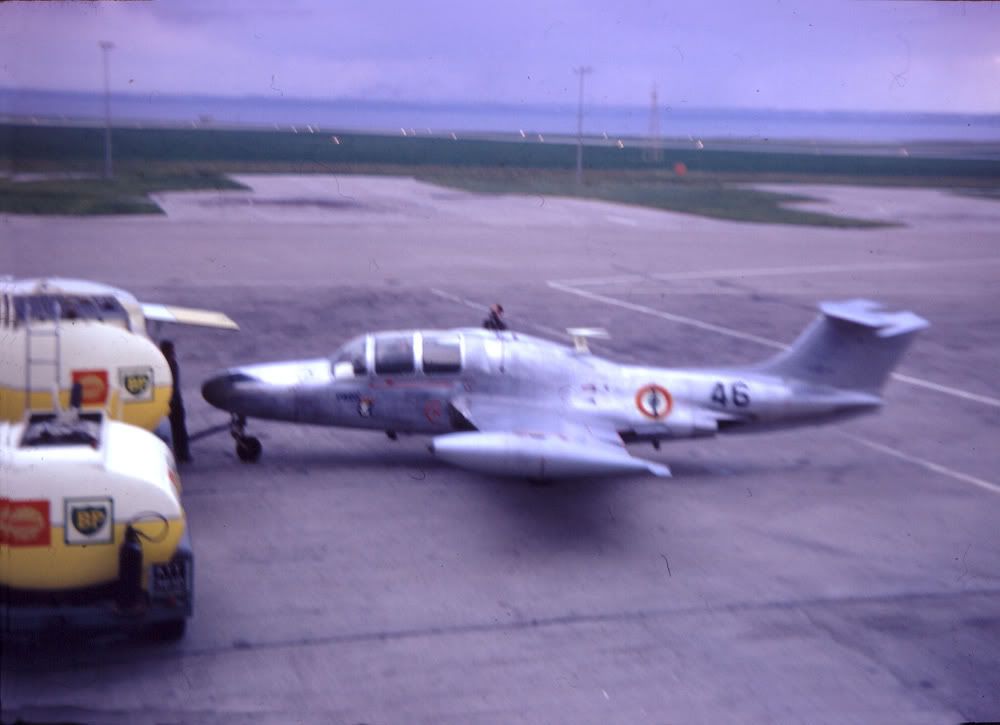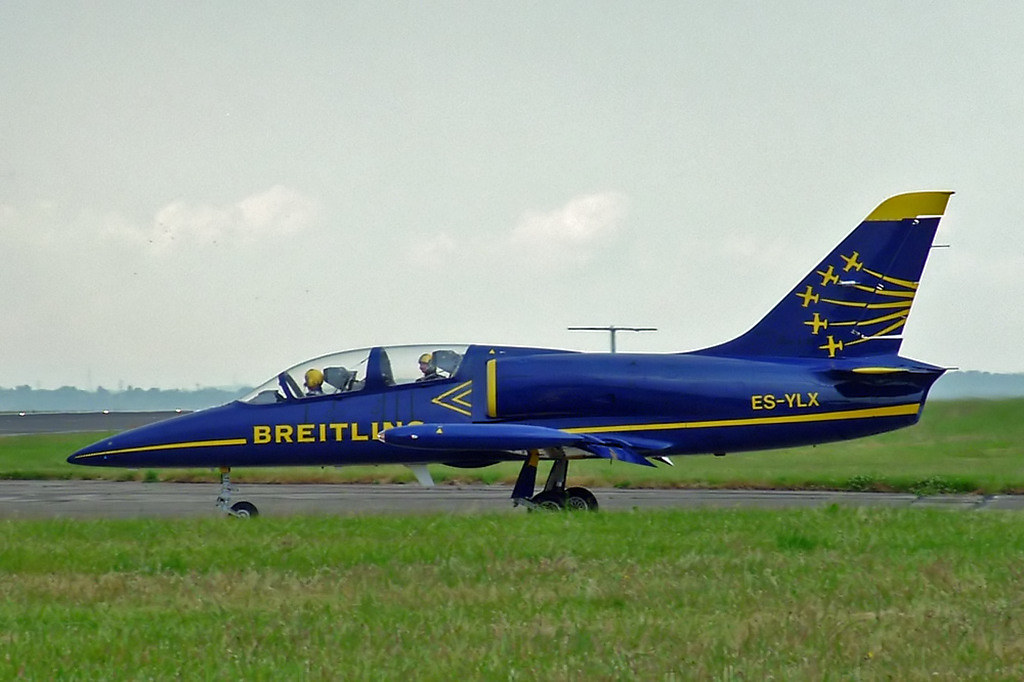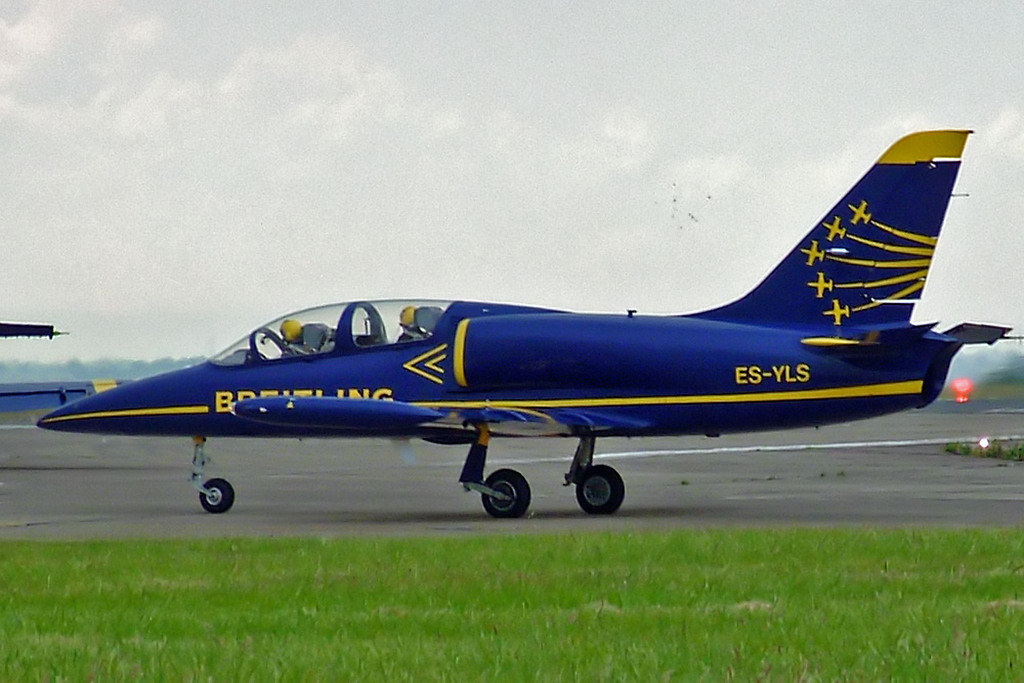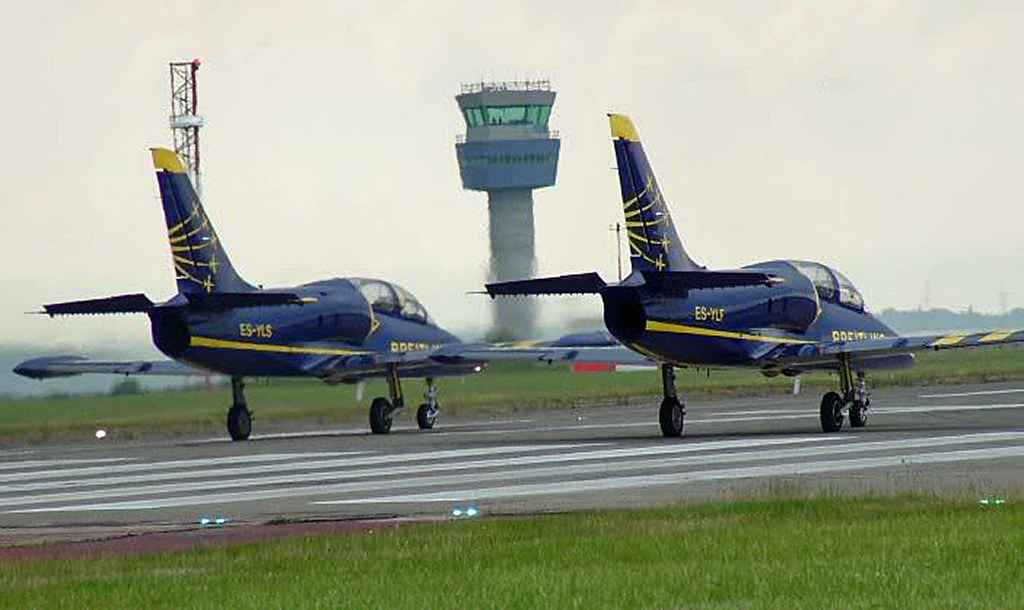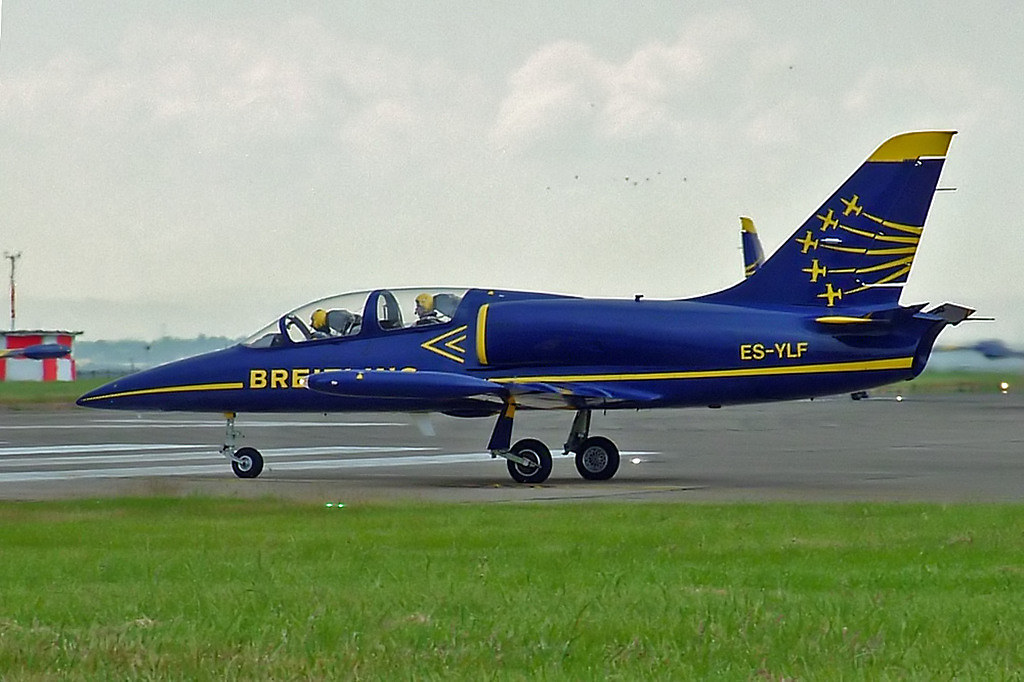Post by viscount on Mar 24, 2010 14:15:01 GMT 1
Over the past few weeks I've come across a number of references to the MS.760 Paris. Most shocking is the announcement that an American company have plans to modify upto 50 ex French military Paris aircraft to meet the growing demand for VLJ personal jets in the 'States. I found a photo of an Aeronavle Paris at Speke and in the past few days Garstonboy has posted a photo of a Brazilian Air Force example. I also recall in my days of compiling the annual list of visitors (without which these type reviews would be near impossible) that the Paris design was an 'odd one out' as it did not fit the type categories easily.
The Paris first flew on 26th July 1954 as a four seat trainer, which could also be used in the communications role. The Paris entered military service February 1959. In all 165 were built, with production ending during 1964. Also, in an attempt to extend production, in 1964 a single Paris III was constructed with a 4 seat cabin entered by 'car style' door, this to overcome the main criticism in the private jet role that any ladies wearing skirts were compromised when climbing into the cockpit. The Paris was a VLJ near 50 years before the term became marketable.
1963
The first visit of type, was a civilian operated example. Owned by Travelair A.G. D-INGA C/no.98 visited on 12th July 1963 from Cologne/Bonn out to Luton.
To put the visit by this civilian Paris into context. The first jet airliner, a Caravelle, did not land at Liverpool until November 1964, followed by the BAC.1-11 in 1965. The only other jets to be seen at Liverpool in 1963 were a Gnat and Jet Provosts for the Air Display and a West German T-33A. Other first visits of type in 1963 include the Argosy, Dart Herald, Gulfstream 1, Nord 260, Do.28, Rallye and Beech Musketeer. The arrival of the diminutive, unusual Paris caused a stir - and I was there!
1967
Two Aeronavale examples visited during the year. No.46/F-YCKP routed from Lorient to Ballykelly on 25th September and again later in the day from Ballykelly to Paris/Le Bourget. Two weeks later, No.84/F-YCKU routed Paris/Le Bourget to Ballykelly on 10th October, returning the next day Ballykelly to Lorient.
Aeronavale, French Navy aircraft have an anchor over the French roundel many are boldly marked 'Marine' on the rear fuselage. French military Paris aircraft use the constructor's number as an identity, with a radio call-sign registration allocated to each airframe. The F-YCK* series were used by 11S, which in 1968 was renamed Section de Liaison de Dugny (SLD) and provided VIP transport for the Naval HQ in Paris, aircraft based at Le Bourget/Dugny. The F-YET* sequence by Section Reacteur de Landivisiau (SRL) who used a small flight of Falcon 10 and Paris aircraft for proficiency and continuation training, with a secondary role as a communications unit.
Air Force aircraft too are identified by the C/no., with radio call-signs allocated by the unit, with the 'last two' of this registration displayed externally, along with the unit number. 65- being 2/65 Escadre de Transport, based at Villacoublay and responsible for training communication and liaison pilots and providing flights for GAEL, using the F-RBL* series call-signs. See, I always knew I'd find a reason for having kept Paul Jackson's 1975 MCP book 'French Military Aviation' for all these years!
1971
The sole Paris III F-BLKL called on 21st October, routing from Hawarden to Toulouse. This aircraft was used for a number of years by Aerospatiale on liaison flights.
1979
Another Aeronavale Paris, No.33/F-YETX on 17th February routed from Reims and onward to Turnhouse.
1981
Ten years after its previous visit to Liverpool, the Paris III F-BLKL still operated by Aerospatiale, visited again on 30th April, from and to Toulouse and sat on the Customs apron at Liverpool all day.
1982
A further Aeronavale visitor, this time No.88/F-YETN called on Monday 18th October, routing from Landivisiau through to Leuchars, 0850-0935 and reappeared later the same day on a return routing 1555-1725.
1985
For a change, in 1985 it was the Armee de l'air (Air Force) who sent a Paris through Liverpool. On Wednesday 6th November, No.58/F-RBLB coded 65-LB with call-sign FM0584 arrived from Edinburgh and continued onto Bournemouth, 1120-1205. At the time I was compiling 'EGGP' magazine for the MAS and flagged this this up as being a likely 'last visit of type' - I was wrong!
1986
Although it did not touch down at Liverpool, it is worth recording that during the year No.19/41-AR made an approach and go-around at 12:18 hours. 41 Escadrille de Liaison Aeriennes within CoTAM, a communications and continuation establishment based at Metz and Dijon. Likely airframe call-sign would have been F-SCAR, however it used FM0819 as a call-sign and was routing from Edinburgh to Cardiff.
1989
Two Aeronavale examples visited within a few days of each other. No.88 calling FMN9005, called on Monday 12th June, from Landivisiau to Leuchars, at Liverpool for fuel 0913-1010. On Thursday 15th June, No.85 calling FMN9120, also routed Landivisiau to Leuchars, for fuel 0921-1010.
1990
Again, in 1990, two Aeronavale examples visited within a few days of each other. First was a re-visit by No.85 on Monday 2nd July as FMN577 from Lorient to Machrihanish, at Liverpool for fuel 1354-1432. This was followed on Wednesday 4th July by No.32 also as FMN577 initially Landivisiau to Machrihanish 0722-0822 and again later on the reverse routing 1043-1106, so the stop at Machrihanish must have been fairly brief!
1992
A number of years on from my initial prediction, came the actual last visit of the type to Liverpool. This time an Armee de l'Air example No.92/F-RBLV coded 65-LV on Friday 21st February with call-sign CTM1255, routing from Dublin and onward to Jersey, on the ground at Liverpool 1429-1501.
Never a significant type, but interesting in that there was no real equivalent by a British manufacturer. In all 10 different aircraft (2 civilian, 8 military) visited Liverpool between 1963 and 1992, a span of some 30 years. I count myself as one of only a limited number of enthusiasts to have seen both military and civil Paris aircraft at Liverpool.
In Summary
No.32/F-Y..., in service 59-97, preserved in flying status as F-AZLT with Association Armor Aero Passion, probably at Quimper. Purcased 2001, rebuilt and reflew 2005 in its Aeronavale colours
No.33/F-YETX, in service 59-73, now stored at Rochfort-Soubise AB for the currently closed Musee des Traditions de l'Aeronautique Navale
No.46/F-YCKP, in service 59-92. Damaged in accident Istres 20.10.92, now on display at Musee du Chateau de Savigny-les-Beaunes
No.58/F-RBLB, sold, now N760F airworthy.
No.84/F-YCKU, in service 61-70. Crashed at Le Bourget 23.12.70
No.85/F-Y...., in service 61-97, currently stored, allocated F-AZTL with Association Armor Aero Passion, probably at Morlaix
No.88/F-YETN, in service 61-97, to N626TC, N88NY, now N760JS airworthy.
No.92/F-RBLV, became N763JS and possibly now wfu.
C/no.98 D-INGA
C/no.01 F-BLKL, Stored with Association Paris, now at Reims-Prunay - was earlier stored at Le Bourget.
The Paris first flew on 26th July 1954 as a four seat trainer, which could also be used in the communications role. The Paris entered military service February 1959. In all 165 were built, with production ending during 1964. Also, in an attempt to extend production, in 1964 a single Paris III was constructed with a 4 seat cabin entered by 'car style' door, this to overcome the main criticism in the private jet role that any ladies wearing skirts were compromised when climbing into the cockpit. The Paris was a VLJ near 50 years before the term became marketable.
The MS.760 Paris visits to Liverpool
1963
The first visit of type, was a civilian operated example. Owned by Travelair A.G. D-INGA C/no.98 visited on 12th July 1963 from Cologne/Bonn out to Luton.
To put the visit by this civilian Paris into context. The first jet airliner, a Caravelle, did not land at Liverpool until November 1964, followed by the BAC.1-11 in 1965. The only other jets to be seen at Liverpool in 1963 were a Gnat and Jet Provosts for the Air Display and a West German T-33A. Other first visits of type in 1963 include the Argosy, Dart Herald, Gulfstream 1, Nord 260, Do.28, Rallye and Beech Musketeer. The arrival of the diminutive, unusual Paris caused a stir - and I was there!
1967
Two Aeronavale examples visited during the year. No.46/F-YCKP routed from Lorient to Ballykelly on 25th September and again later in the day from Ballykelly to Paris/Le Bourget. Two weeks later, No.84/F-YCKU routed Paris/Le Bourget to Ballykelly on 10th October, returning the next day Ballykelly to Lorient.
Aeronavale, French Navy aircraft have an anchor over the French roundel many are boldly marked 'Marine' on the rear fuselage. French military Paris aircraft use the constructor's number as an identity, with a radio call-sign registration allocated to each airframe. The F-YCK* series were used by 11S, which in 1968 was renamed Section de Liaison de Dugny (SLD) and provided VIP transport for the Naval HQ in Paris, aircraft based at Le Bourget/Dugny. The F-YET* sequence by Section Reacteur de Landivisiau (SRL) who used a small flight of Falcon 10 and Paris aircraft for proficiency and continuation training, with a secondary role as a communications unit.
Air Force aircraft too are identified by the C/no., with radio call-signs allocated by the unit, with the 'last two' of this registration displayed externally, along with the unit number. 65- being 2/65 Escadre de Transport, based at Villacoublay and responsible for training communication and liaison pilots and providing flights for GAEL, using the F-RBL* series call-signs. See, I always knew I'd find a reason for having kept Paul Jackson's 1975 MCP book 'French Military Aviation' for all these years!
1971
The sole Paris III F-BLKL called on 21st October, routing from Hawarden to Toulouse. This aircraft was used for a number of years by Aerospatiale on liaison flights.
1979
Another Aeronavale Paris, No.33/F-YETX on 17th February routed from Reims and onward to Turnhouse.
1981
Ten years after its previous visit to Liverpool, the Paris III F-BLKL still operated by Aerospatiale, visited again on 30th April, from and to Toulouse and sat on the Customs apron at Liverpool all day.
1982
A further Aeronavale visitor, this time No.88/F-YETN called on Monday 18th October, routing from Landivisiau through to Leuchars, 0850-0935 and reappeared later the same day on a return routing 1555-1725.
1985
For a change, in 1985 it was the Armee de l'air (Air Force) who sent a Paris through Liverpool. On Wednesday 6th November, No.58/F-RBLB coded 65-LB with call-sign FM0584 arrived from Edinburgh and continued onto Bournemouth, 1120-1205. At the time I was compiling 'EGGP' magazine for the MAS and flagged this this up as being a likely 'last visit of type' - I was wrong!
1986
Although it did not touch down at Liverpool, it is worth recording that during the year No.19/41-AR made an approach and go-around at 12:18 hours. 41 Escadrille de Liaison Aeriennes within CoTAM, a communications and continuation establishment based at Metz and Dijon. Likely airframe call-sign would have been F-SCAR, however it used FM0819 as a call-sign and was routing from Edinburgh to Cardiff.
1989
Two Aeronavale examples visited within a few days of each other. No.88 calling FMN9005, called on Monday 12th June, from Landivisiau to Leuchars, at Liverpool for fuel 0913-1010. On Thursday 15th June, No.85 calling FMN9120, also routed Landivisiau to Leuchars, for fuel 0921-1010.
1990
Again, in 1990, two Aeronavale examples visited within a few days of each other. First was a re-visit by No.85 on Monday 2nd July as FMN577 from Lorient to Machrihanish, at Liverpool for fuel 1354-1432. This was followed on Wednesday 4th July by No.32 also as FMN577 initially Landivisiau to Machrihanish 0722-0822 and again later on the reverse routing 1043-1106, so the stop at Machrihanish must have been fairly brief!
1992
A number of years on from my initial prediction, came the actual last visit of the type to Liverpool. This time an Armee de l'Air example No.92/F-RBLV coded 65-LV on Friday 21st February with call-sign CTM1255, routing from Dublin and onward to Jersey, on the ground at Liverpool 1429-1501.
Never a significant type, but interesting in that there was no real equivalent by a British manufacturer. In all 10 different aircraft (2 civilian, 8 military) visited Liverpool between 1963 and 1992, a span of some 30 years. I count myself as one of only a limited number of enthusiasts to have seen both military and civil Paris aircraft at Liverpool.
In Summary
No.32/F-Y..., in service 59-97, preserved in flying status as F-AZLT with Association Armor Aero Passion, probably at Quimper. Purcased 2001, rebuilt and reflew 2005 in its Aeronavale colours
No.33/F-YETX, in service 59-73, now stored at Rochfort-Soubise AB for the currently closed Musee des Traditions de l'Aeronautique Navale
No.46/F-YCKP, in service 59-92. Damaged in accident Istres 20.10.92, now on display at Musee du Chateau de Savigny-les-Beaunes
No.58/F-RBLB, sold, now N760F airworthy.
No.84/F-YCKU, in service 61-70. Crashed at Le Bourget 23.12.70
No.85/F-Y...., in service 61-97, currently stored, allocated F-AZTL with Association Armor Aero Passion, probably at Morlaix
No.88/F-YETN, in service 61-97, to N626TC, N88NY, now N760JS airworthy.
No.92/F-RBLV, became N763JS and possibly now wfu.
C/no.98 D-INGA
C/no.01 F-BLKL, Stored with Association Paris, now at Reims-Prunay - was earlier stored at Le Bourget.

